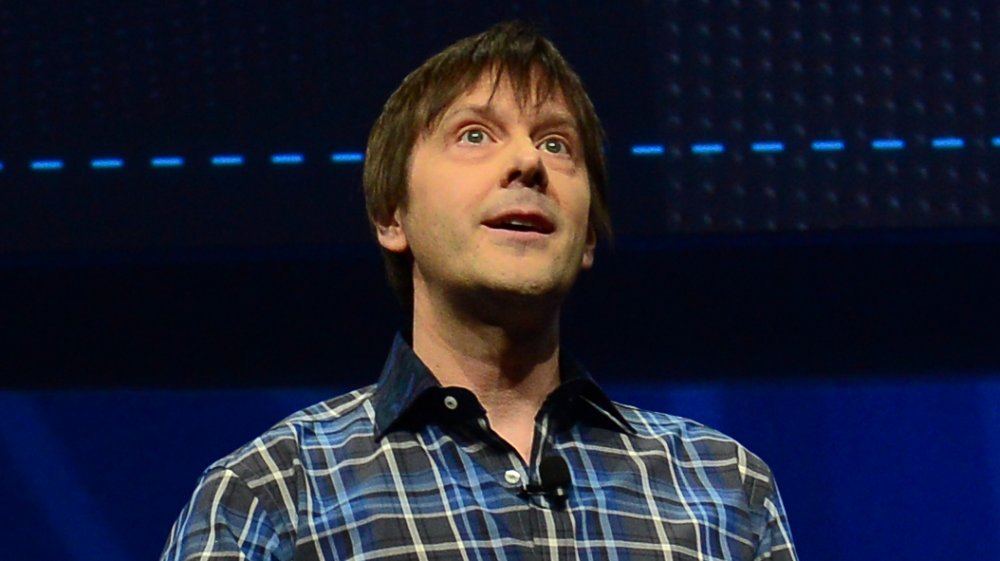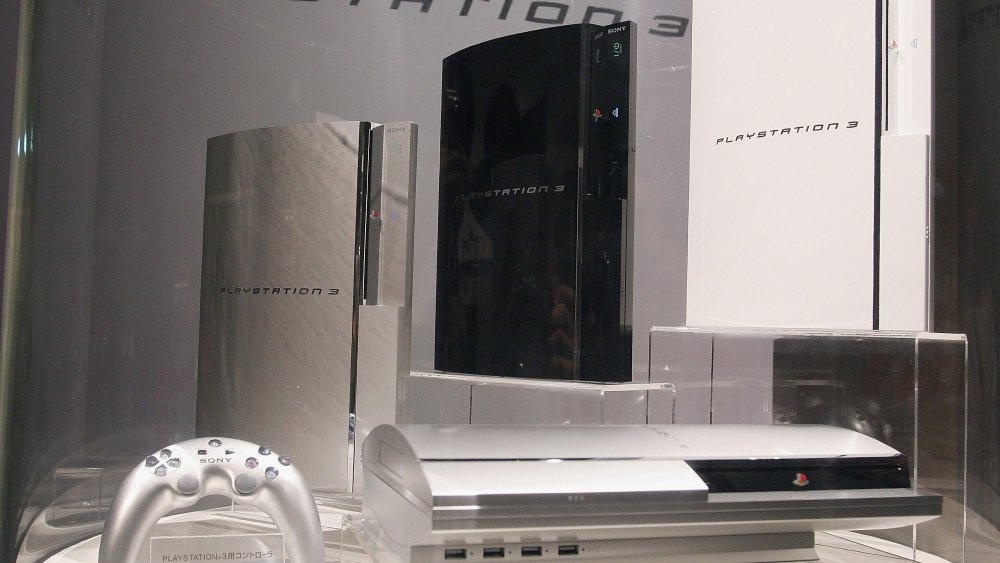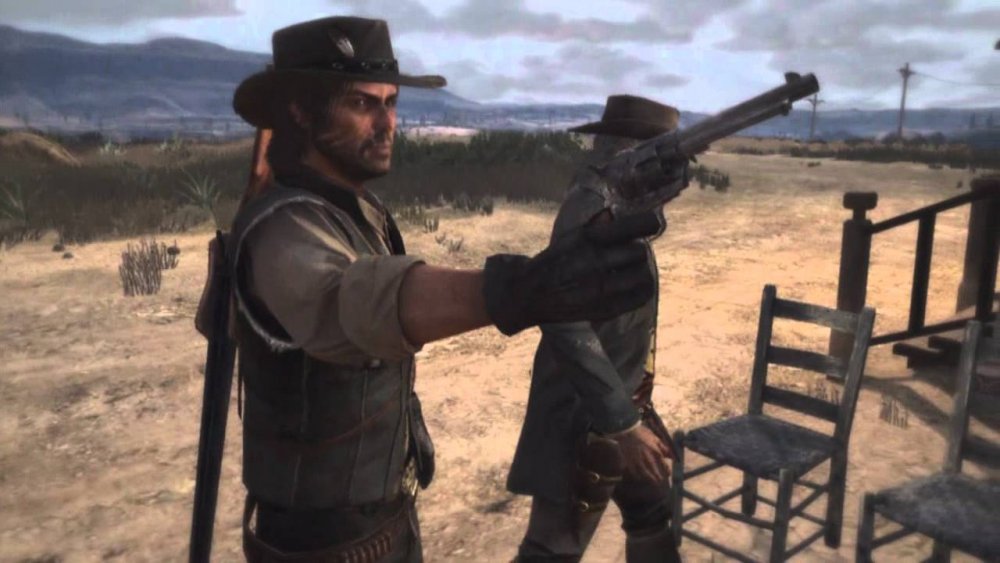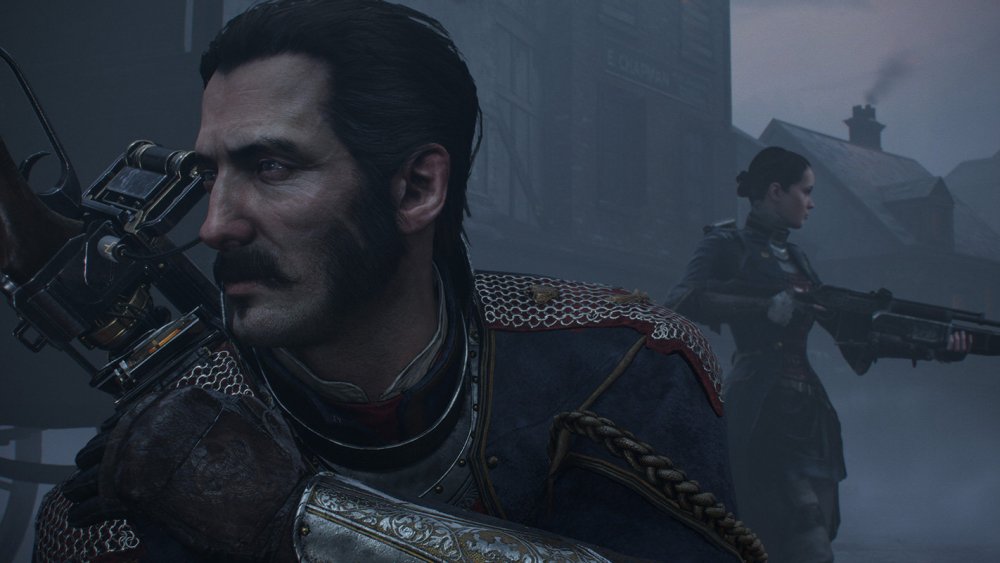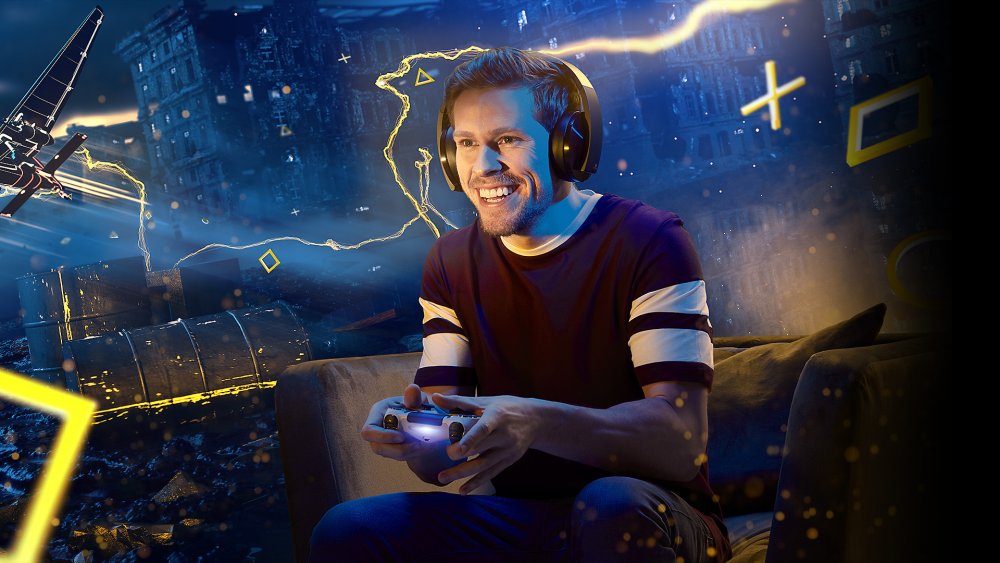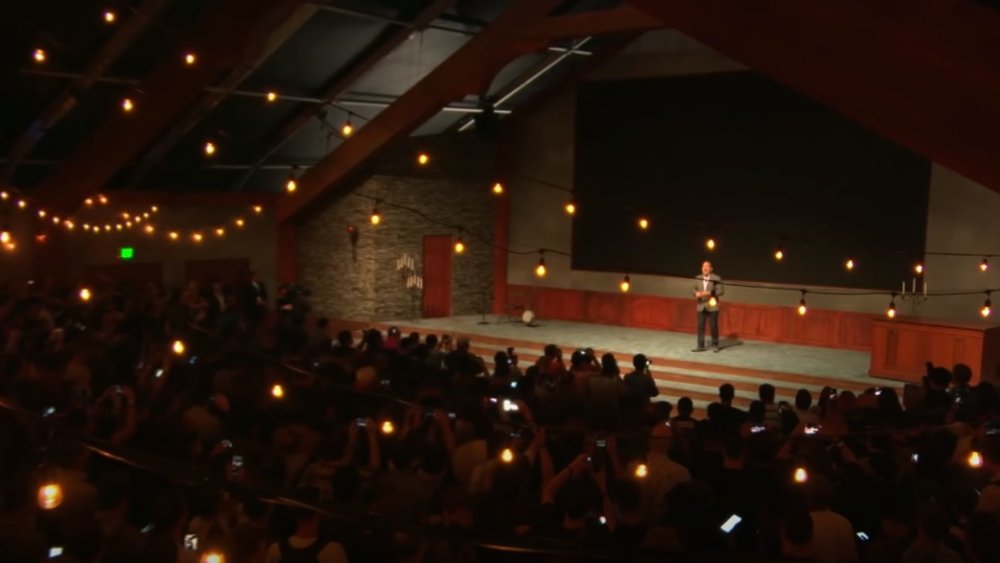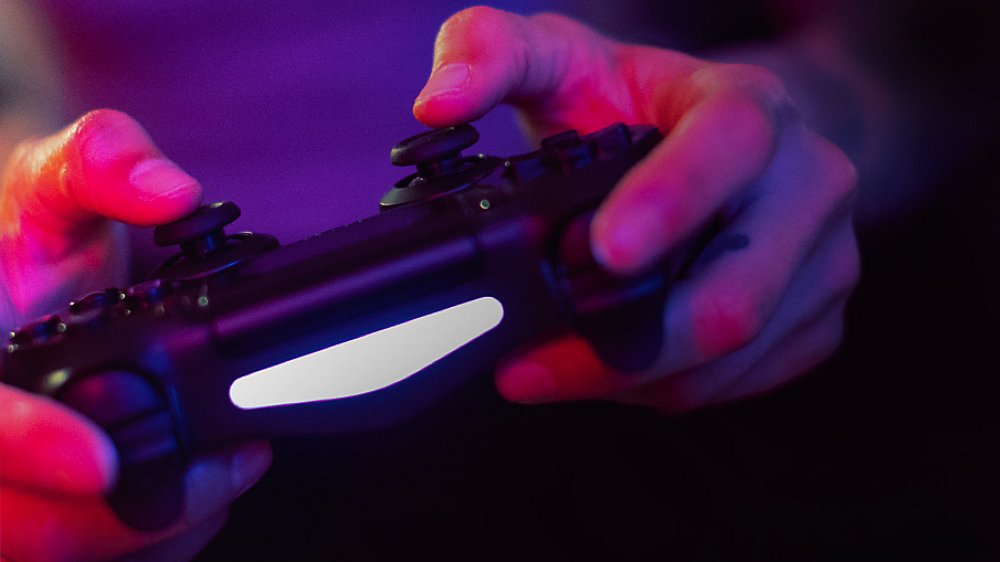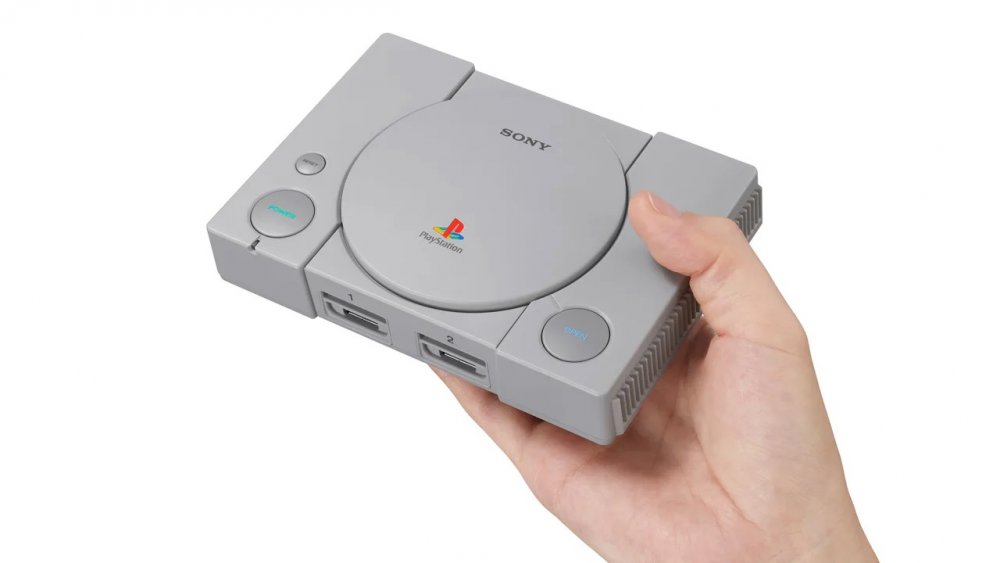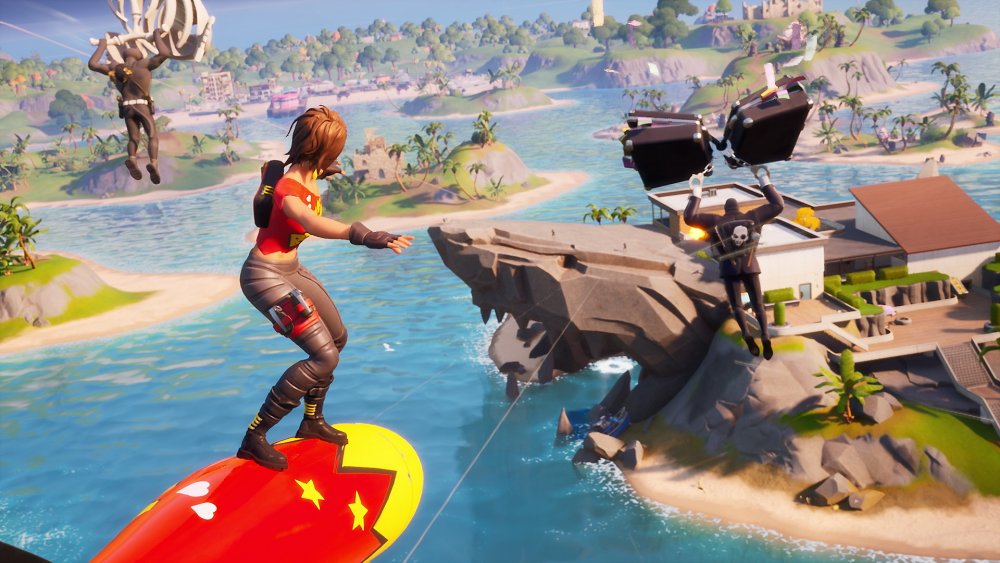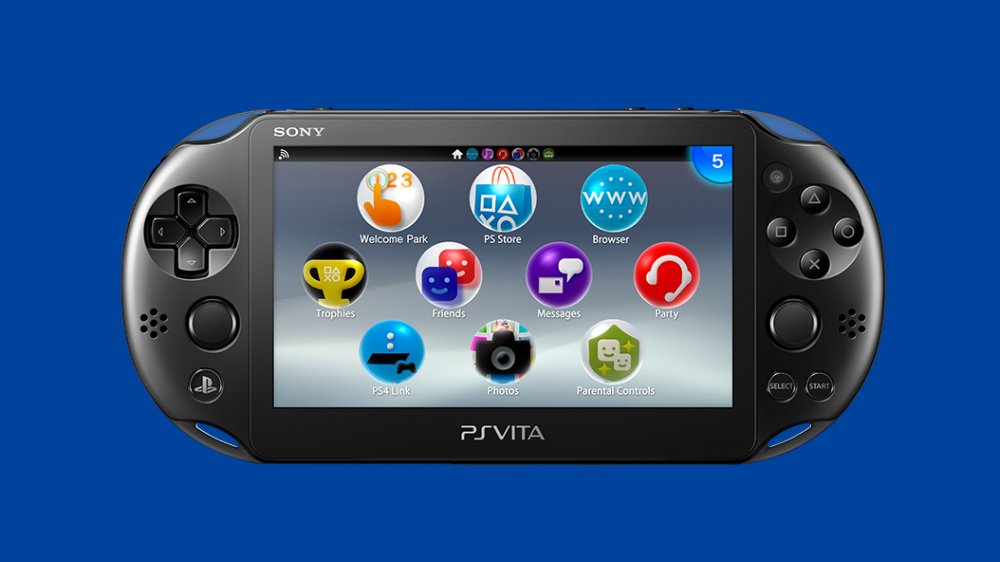Things Sony Wants You To Forget About PlayStation
Sony's enjoyed one hell of a run with the PlayStation 4. Loads of awesome exclusives have graced the platform, and customers have rewarded Sony with over 100 million PS4 purchases as a result. It seems pretty evident that Sony has the upper hand heading into the next console generation, as the PS4 has all but left the Xbox One in the dust. But the company isn't infallible. In fact, Sony has made some mistakes in the past it would rather you turn a blind eye to.
Terrible launches. Huge controversies. Discontinued products. There's a lot in Sony's PlayStation past that could be cause for concern. While the PS4 was a hit and the PlayStation 5 is shaping up to be a very promising follow-up machine, these older slip-ups could be repeated, and Sony could once again find itself in second place. Here are some things Sony wants you to forget about PlayStation. Let's see if you already have or not.
Sony's proprietary tech can be costly
The PlayStation 2 was a monumental success for Sony, and went on to become the bestselling video game console of all time. After that kind of an outing, you'd be right in thinking gamers were ready to see what Sony had up its sleeves for its next console. That system was, rather unsurprisingly, called the PlayStation 3, and it looked to offer more of the same in terms of great games and interesting tech.
Unfortunately, that tech is also what might have doomed the PS3. When Sony announced the price of the new machine in May 2006, the higher end model — the one most were encouraged to get — came in at $599. It was a roundhouse kick to wallets everywhere.
A big reason why the PlayStation 3 was so expensive had to do with its tech. Sony touted a brand-new architecture focused around its "Cell Processor," and while that architecture was supposed to help produce more powerful games, it came with a hefty price tag. You can definitely see similarities in that approach and the way Sony is rolling out the PS5 today. Hopefully sending ear photos to Mark Cerny won't drive up the cost of the PS5 quite as much.
Sony didn't see the point of backward compatibility
Backward compatibility is something we're hearing more and more about these days, and that's thanks largely to gamers. Both the PlayStation 4 and Xbox One debuted without any kind of backward compatibility and, not surprisingly, players were very upset they couldn't bring their previously purchased games forward with them. Consumers made their feelings heard, and both Sony and Microsoft responded by making backward compatibility a staple in future consoles like the PlayStation 5 and Xbox Series X.
While Sony and Microsoft are ensuring backward compatibility exists in the next gen, it's worth noting what happened during this current generation, too. It might disappoint you to learn that, at one point, Sony again held a position that wasn't really "for the players."
After hearing the public outcry about past generations of titles being lost, Microsoft's engineers worked feverishly to come up with a solution. At E3 2015, Microsoft announced Xbox 360 Backward Compatibility for Xbox One. That effort was followed up later with an announcement for original Xbox backward compatibility, offering Xbox One owners three generations of Xbox titles to play.
Sony, meanwhile, balked at the idea entirely. The most famous quote came from Sony's Jim Ryan, who asked of older games, "[W]hy would anyone play this?" According to Sony, there was no point in helping consumers preserve their digital purchases for the future because they'd much rather play newer games. Judging by the company's shift in philosophy with the PS5, it seems that claim wasn't entirely accurate.
The PS4 had a huge content drought
The PlayStation 4 seems like a no-brainer console to own these days and that's thanks in no small part to its exclusives. You can play the entire Uncharted series, which is world class. The newest Spider-Man title is truly the best one to ever star the web-slinging hero. God of War brought the series back in a truly impressive way, and seems destined to get a sequel. Horizon: Zero Dawn was the first entry in a brand new franchise, and it was spectacular.
Things weren't always great for the PlayStation 4, though. Time has helped people forget the console's earlier missteps, and if you think back real hard, you might remember feeling disappointed with Sony's content output early on.
The PS4 lineup was fairly lackluster in 2013 and 2014. Killzone: Shadow Fall, though a launch title, was an otherwise forgettable first-person shooter. The Order: 1886, which arrived in February 2014, was way too short and didn't live up to the pre-release hype it had generated. In fact, it wasn't until February 2015 that the PlayStation 4 got its first legitimate hit in Bloodborne. After that, Sony started dropping bombs left and right, and the rest is history.
Sony's PlayStation Plus service lost a lot of value
Both PlayStation Plus and Xbox Live offer a selection of games each month that players can download on the house. For a while, the two services were fairly competitive with one another. Sony gave away a slew of PS4, PS3, and PlayStation Vita titles. Microsoft did the same with Xbox One and Xbox 360 games. Unfortunately, most good things don't last forever.
In February 2019, Sony had a free games lineup full of PS4, PS3, and Vita titles. The next month, PS3 and Vita games were cut entirely out of the equation, never to be seen again.
Sony would prefer you not think too much about this obvious downgrade. Your PlayStation Plus subscription didn't get any cheaper, after all — you're still paying the same price, only now you're getting fewer free games. This is an area Sony could potentially make good on when the PlayStation 5 launches, if PS5 titles are added to PlayStation Plus alongside the PS4 freebies. But it's hard to deny that PS Plus isn't as valuable today as it was years ago, and that's on Sony.
The company's E3 2018 show was confusing
Sony hasn't been on an E3 stage for a number of years now, as the company has instead chosen to experiment with Nintendo Direct-style live streams and fan events. But did you ever wonder what might have been the driving force behind that decision? Sony claims E3 isn't the show it used to be, which is for the most part true. But if you buy that as the reason Sony's been skipping E3, you might be forgetting the performance the company put on at the conference a few years back.
E3 2018 will forever be known as that one with the weird Sony press conference, and for good reason. Sony shuttled conference-goers from one themed location to another, showing off The Last of Us Part 2, Ghost of Tsushima, Death Stranding, and Spider-Man. The transitions didn't happen quickly; people had to move in a mob between locations, find their seats, and get settled before the next presentation began.
All of this was made worse by the fact Sony was actually showing off other games to those watching on the internet during those breaks. So, those in attendance were actually missing news rather than reporting on it. Many in the media lambasted Sony for the way it handled E3 2018, and the next year, Sony was nowhere to be found at the conference. Perhaps those two facts aren't just coincidence.
Sony failed to protect the accounts of 77 million PSN users
Despite the PlayStation 3's dreadful launch, the system mostly recovered the ground it lost over the next few years. The Uncharted games from Naughty Dog really helped define a new era for Sony, and robust third-party support solidified the PS3 as a contender. If you were a PlayStation 3 owner in 2011, though, you probably don't remember all the good times. In fact, that year became one of the darkest the PlayStation brand — and by extension, its fans — have ever had to endure.
Starting in April 2011, a group of hackers known as Anonymous went hard at PSN, using DDOS (distributed denial of service) attacks to hammer the network and render it practically unusable. Sony was then forced to take PSN offline entirely, and for a period of a few weeks, online multiplayer gaming just didn't exist on the PS3.
But that wasn't the worst of it. On April 26, Sony informed its customers that their information had been compromised. That information included, according to Eurogamer, "users' names, home addresses, email addresses, birth dates, PSN passwords and usernames." Not the kind of details you'd want hackers to get a hold of.
Sony eventually patched things up a few weeks into May and PlayStation Network once again came online and — for the most part — stayed online. But Sony definitely lost some trust as a result of the hack.
The PlayStation Classic
The NES Classic and SNES Classic were products that both invoked nostalgia and offered a good experience to fans of retro games. Both were also wildly successful, helping Nintendo generate a ton of income from titles that came out decades ago. It's no surprise, then, that Sony saw what Nintendo was doing and wanted a little piece of that pie. Sony had a console that could seemingly be called retro too in the original PlayStation. Why not put out something similar and rake in the dough?
That's what Sony ended up doing in 2018, releasing a PlayStation Classic with a lineup of 20 included titles. Sadly, though, Sony severely botched the execution.
To start, many of the games on the PlayStation Classic either weren't hits, or weren't games closely associated with the PlayStation brand. Who would buy a PlayStation Classic hoping to play the original Rainbow Six? Many also felt that some iconic games from the PlayStation era were missing entirely. Both Tomb Raider and Crash Bandicoot were mainstays on the platform, but neither property was represented on the PlayStation Classic.
Finally, Sony made some questionable decisions regarding the Classic's emulation. Some of the games on the American system were actually European releases, which meant they were developed with a completely different TV refresh rate in mind. This made the titles look terribly janky as a result.
The PlayStation Classic — which debuted at $100 — can now be found selling for a little as $40. It's safe to say fans weren't impressed with Sony's effort.
Sony stood in the way of cross-play for years
Cross-play is a concept that helps both game developers and players. It tears down the wall between console ecosystems, allowing those on one console network to play with those on another. You can see it utilized in Call of Duty: Modern Warfare, which enables those on Xbox Live to team up with their friends on PlayStation Network. It helps keep player counts high and ensures players can always get into a multiplayer match if they so choose.
Unfortunately, Sony would rather you forget that, until fairly recently, it wasn't a big fan of cross-play at all.
When Phil Spencer took over as the head of Xbox at Microsoft, he made the promotion of cross-play more of a focus, and helped ensure newer Xbox Game Studios titles allowed cross-play between console and PC. Game developers like Psyonix — the studio behind Rocket League — also pushed hard for cross-play. Sony wasn't having it for the longest time, however, claiming "the best place to play" was on PlayStation. It wasn't until Fortnite came along to press the issue that Sony finally caved and allowed its PlayStation Network users to start matching with those on other platforms.
Sony isn't above walking out on a product or service
If you're a PlayStation fan, you've seen tons of technology come and go over the years. Remember Sony's brief fling with motion-controlled games on the PS3? Or those PlayStation-branded 3D TVs the company helped push? Sometimes that's just the way technology evolves; new ways of playing become available, and everyone rushes to support them.
Sony in particular has a habit, though, of shutting down or abandoning that thing you might have liked. And sometimes you're not really sure why.
Once upon a time, the company's PlayStation Now streaming service was usable on both PlayStation 3 consoles and smart TVs. Continuing this support could've helped extend the PlayStation ecosystem to even more people, perhaps pushing them toward buying the newest PlayStation console someday. However, Sony abruptly cut support for PS3 and smart TVs, likely because PlayStation 4 titles were planned for PlayStation Now.
The PlayStation Vita was also discontinued after being neglected for years on end. Tons of fans bought into the idea of a PlayStation gaming experience on the go, and for a few years, it seemed like they'd get it. But Sony quietly shifted its focus away from the Vita once the PS4 arrived, and until the Nintendo Switch came along, the Vita essentially became an indie gaming machine.
And finally, there's PlayStation Vue. Sony's streaming TV service was tailor made for those on PlayStation consoles, and many who subscribed thought the service was the best around. After a few short years, Sony killed that, too. When it comes to Sony, very little in PlayStation land is safe.

